Piano Chords for Beginners: All You Need To Know
Learning to play the piano can be an exciting journey. One of the fundamental aspects every beginner should grasp is Piano Chords. Simply put, they are a combination of notes played together to create harmony. Mastering these chords will unlock a world of music for you. In this blog, Pianosintheparks.com will introduce you to 14 basic piano chords for beginners, how to play them on the keyboard, and provide tips to enhance your practice.
See More:
- How to Play Piano for Beginners
- 5+ Best Piano for Beginners Sheet Music
- Play Piano Online Quickly for Beginners
- How Many Piano Keys Are On A Piano?
- 7 Easiest Ways to Improve Your Piano
What Are Piano Chords?
A piano chord combines three or more notes played simultaneously on the piano. They are built by stacking notes on top of each other to create a harmonious sound. Chords are often used to provide the foundation for a piece’s melody.
The most common chords are major, minor, and seventh chords. Each type of chord has a unique sound and emotional quality. Understanding the differences among these chords is essential for any aspiring pianist.
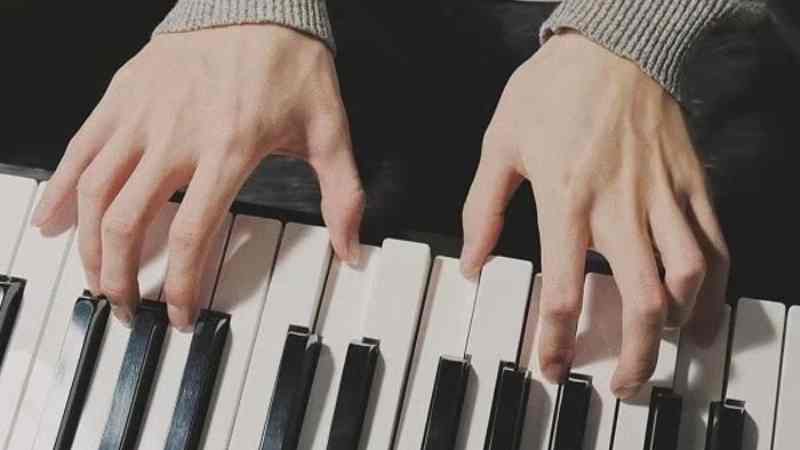
Understanding 14 Basic Piano Chords
Piano chords are divided into 2 main types: 7 major chords and 7 minor chords. Let’s explore these 14 basic chords with Pianos in the Parks!
7 Major Chords
Major chords are one of the most basic and important types of chords in music, serving as the foundation for many piano pieces. These chords have a bright and happy sound. The 7 major chords include:
- C Major (C)
- D Major (D)
- E Major (E)
- F Major (F)
- G Major (G)
- A Major (A)
- B Major (B)
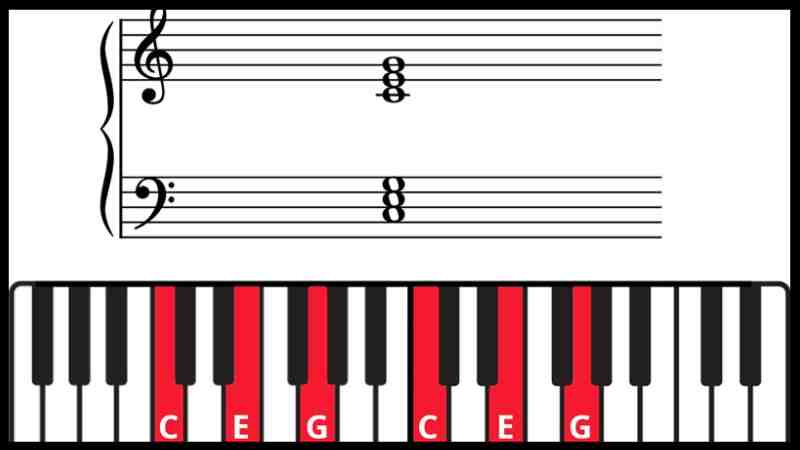
Construction: Major piano chords are constructed from 3 notes, following these rules:
- Root note: The first and fundamental note of a chord. For example, C major has C as the root note.
- Second note: 4 steps away from the root note. For example, C major has E as the second note.
- Third note: 3 steps away from the second note. For example, C major has G as the third note.
Formula: The formula to remember the construction of major chords is: 1 – 3 – 5.
- 1: Root note (1st note in the corresponding major scale).
- 3: Note 3 steps away from the root note (3rd note in the corresponding major scale).
- 5: Note 5 steps away from the root note (5th note in the corresponding major scale).
Examples:
- C Major (C – E – G)
- D Major (D – F# – A)
- E Major (E – G# – B)
- F Major (F – A – C)
- G Major (G – B – D)
- A Major (A – C# – E)
- B Major (B – D# – F#)
Playing Technique:
The way to play major piano chords on the piano can vary depending on the position on the keyboard and the player’s preference. However, there are some common ways to play each chord that you can refer to on reputable music websites or in piano textbooks.
Role: Major chords are often used to:
- Provide the foundation for the melody, making the music harmonious and easy to listen to.
- Express cheerful, lively, and optimistic emotions.
- Accompany the melody, making it stand out more.
- Transition between different sections of music.
7 Minor Chords
Minor chords are the second most common type of piano chord in music, bringing sad, melancholic, and subdued emotions, adding diversity to piano pieces. The 7 minor chords include:
- C Minor (Cm)
- D Minor (Dm)
- E Minor (Em)
- F Minor (Fm)
- G Minor (Gm)
- A Minor (Am)
- B Minor (Bm)
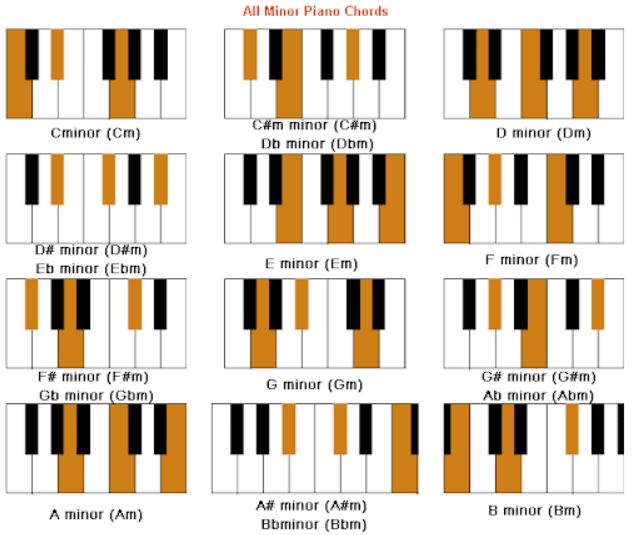
Construction: Minor chords are constructed from 3 notes, following these rules:
- Root note: The primary note that is used to refer to the chord. For example, Cm has C as the root note.
- Second note: 3 steps away from the root note. For instance, the second note in Cm is Eb.
- Third note: 4 steps away from the second note. For example, Cm has G as the third note.
Formula: The formula to remember the construction of minor piano chords is: 1 – 3b – 5.
- 1: Root note (1st note in the corresponding minor scale).
- 3b: Note 3 steps away from the root note and lowered by a half step (3rd note in the corresponding minor scale).
- 5: Note 5 steps away from the root note (5th note in the corresponding minor scale).
Examples:
- Cm (C – Eb – G)
- Dm (D – F – A)
- Em (E – G – B)
- Fm (F – Ab – C)
- Gm (G – Bb – D)
- Am (A – C – E)
- Bm (B – D – F#)
Playing Technique:
Similar to major chords, the way to play minor chords on the piano can vary depending on the position on the keyboard and the player’s preference. However, there are some common ways to play each chord that you can refer to on reputable music websites or in piano textbooks.
Role: Minor chords are often used to:
- Express sad, melancholic, and subdued emotions.
- Create contrast with major chords, making the music more diverse.
- Accompany the melody, providing a foundation for melodies with a sad tone.
- The transition between different sections of music.
Seventh Chords
Besides the 14 basic chords, there are seventh chords. They add depth to music. Seventh chords consist of a root note, a major or minor third, a perfect fifth, and a seventh. For instance, the C7 chord consists of C, E, G, and Bb.
Get Started to Learn Chords on Keyboard
When you learn to play piano chords on keyboard, you build a solid foundation for your piano skills. Understanding how chords work will help you play various songs and styles. You will also gain the ability to improvise and create your own music.
Here’s how to start:
- Familiarize Yourself with the Keyboard: Before diving into chords, ensure you know the layout of the piano keys. Each key corresponds to a note. Practice identifying these notes as they are crucial for chord formation.
- Use a Piano Chords Table: A helpful tool for beginners is a piano chords table. This table displays various chords along with their notes. You can find many resources online or create your own to assist with your learning.
- Practice Chord Progressions: Once you understand individual chords, practice playing them in sequences. Common progressions, such as the I-IV-V progression, will help you understand how chords relate to each other musically.
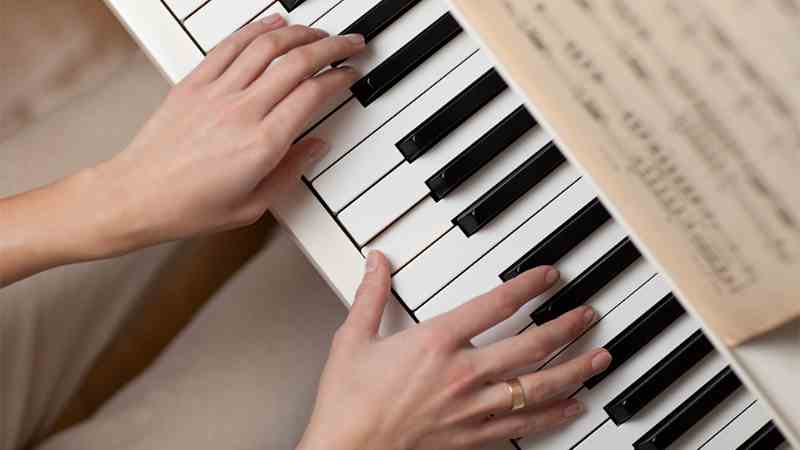
How to Play Piano Chords on Piano
Step 1: Position Your Fingers
Proper finger placement is key to playing chords effectively. For a C Major chord, place your thumb on C, your middle finger on E, and your pinky on G. This position allows for a comfortable hand shape and smooth transitions.
Step 2: Play the Chord
Press down all three keys simultaneously. Make sure to use even pressure to produce a clean sound. Listen closely to the harmony created by the chord.
Step 3: Practice Switching Between Chords
Start with simple transitions. Move from C Major to A Minor, then back to C Major. This practice will help you develop finger strength and agility.
Step 4: Incorporate Rhythm
Once you’re comfortable playing chords, try adding rhythm. Experiment with different timing and dynamics. This will bring your playing to life.
Tips for Practicing Better
- Start with Simple Chords: Instead of trying to memorize all 14 chords at once, start with the 3-4 most common major and minor chords like C, G, Am, and F. Once you master these chords, you can gradually learn the others.
- Set a Practice Schedule: Consistency is crucial when learning piano chords. Dedicate time each day to practice, even if it’s just 15-20 minutes.
- Use a Metronome: A metronome helps you maintain a steady tempo. Start slow, then gradually increase the speed as you become more comfortable.
- Learn Simple Songs: Choose simple songs that incorporate the chords you’ve learned. Playing along with music can be motivating and rewarding.
- Be Patient: Learning the chords takes time. Don’t rush the process. Celebrate small victories along the way.
Conclusion
Mastering the chords is essential for any pianist. It opens doors to creativity, expression, and a deeper understanding of music. Start with the basics, use a piano chords table, and practice regularly. With time and dedication, you’ll become proficient at playing piano chords on piano. So, sit down at your keyboard, and let the music begin!

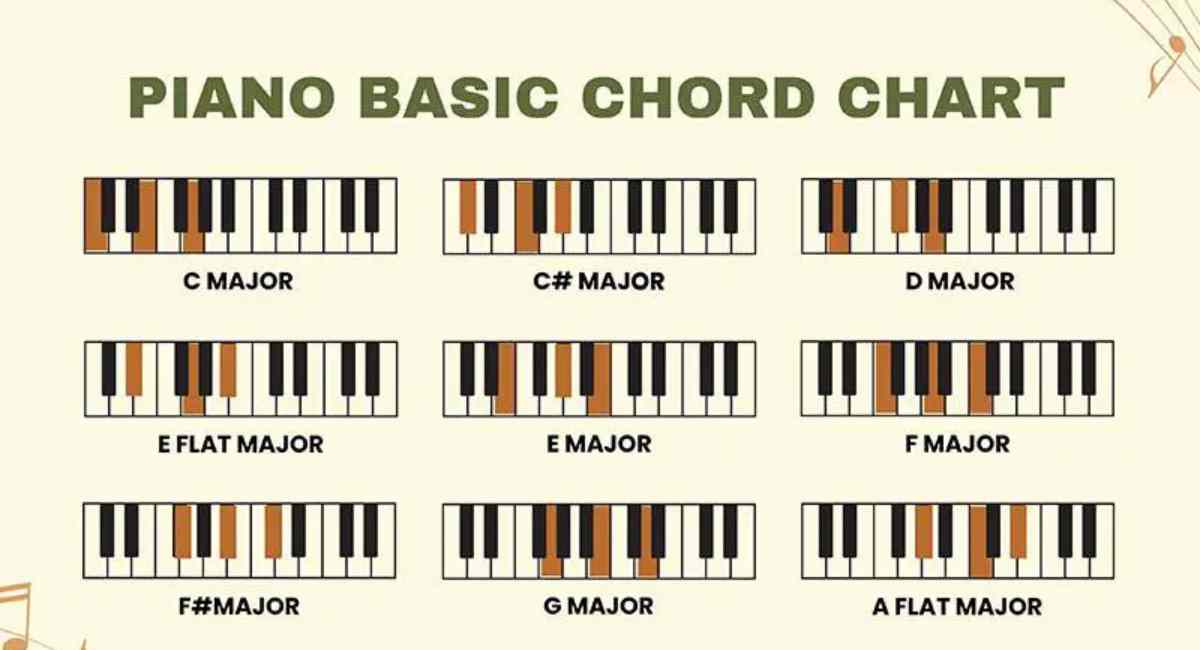


Leave a Reply
Want to join the discussion?Feel free to contribute!